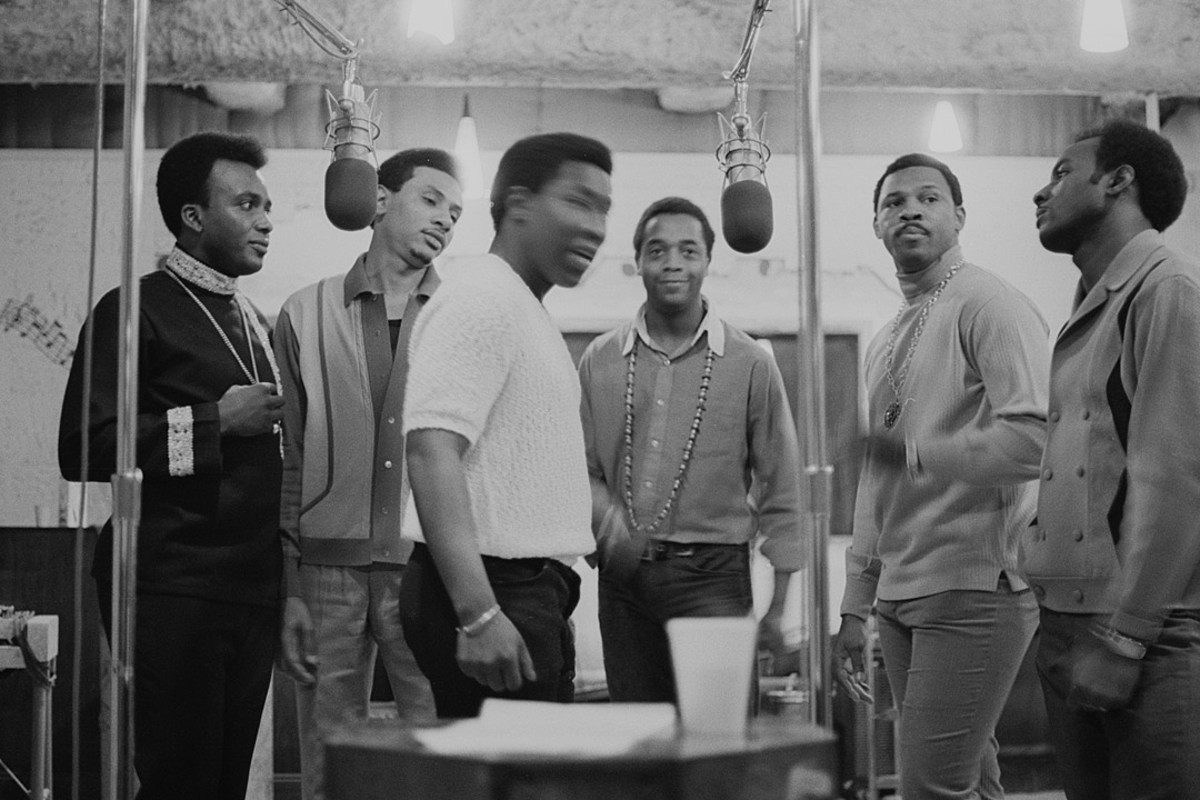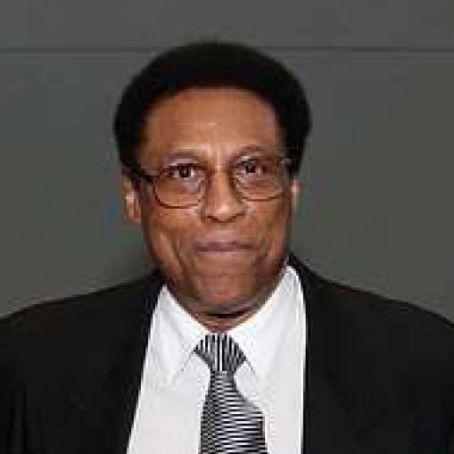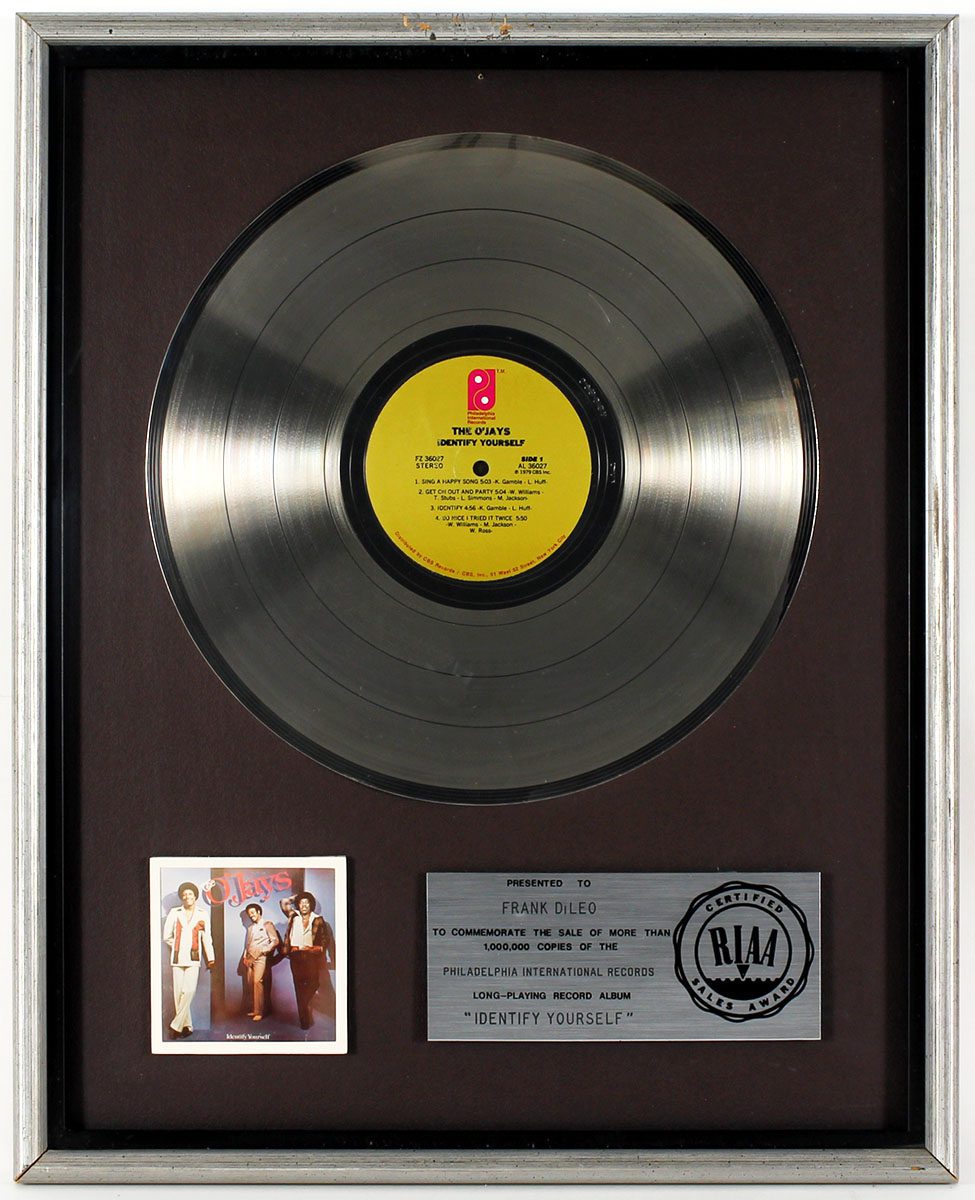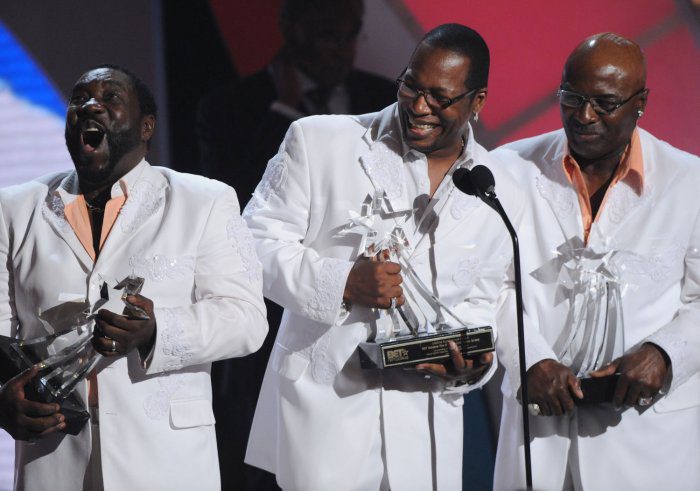Thesis
Created in the late 1950’s, the singing group now known as the O’Jays, was created. The group started off small, but continued to grow during the 1960s, creating hits songs and albums throughout the height of their popularity. And though not recognized much by the younger generations, these men made their marks on the world with their voices and band style.
The Beginning
The origins of the O’Jays date back to the late 1950s at McKinley High School, with relationships dating back to the 1940s. Childhood friends Eddie Levert (born June 16, 1942) and Walter Williams (born August 25, 1942), two of the original members, began preforming gospel music together in their hometown of Canton, Ohio. Later on, in the 1959, the two pair teamed with schoolmates William Powell (born January 20, 1942), Bill Isles (born January 4, 1941, in McAtenville, NC), and Bobby Massey (born March 9, 1940) to form an R&B group called the “Triumphs.” Two years later, the “Triumphs,” changed their name to the “Mascots,” and released a single titled “Miracles in 1961. Then again in 1963, the group changed their name again to the O’Jays to play homage to a Cleveland radio disc jockey Eddie O’Jay.

Changes Over the Years
By 1965, the O’Jays has only had their new name for two years, but the group had been together and performing since 1959, and after all that time without any true major success, the first member leaves the group. This former member was Bill Isles, the only original member to be born out of Canton, Ohio. After Isles, the group remained a quartet for some time, putting out their debut album, titled “Coming Thru,” the same year Isles left for “family reasons.” Up until the early 1970s, the group stayed a quartet and charted with minor hits over the years. In 1971, a second original member left the group. This time it was Bobby Massey, and he left to pursue a career in record production, leaving the group a trio. The last of the original members to leave was William Powell, leaving the two childhood friends together. Powell left the group after major success after being diagnosed with colon cancer in 1975, and later dying on May 26, 1977, at the age of 35.
After Powell’s departure, the two remaining members decided to add another member, creating a trio again. They decided to add Sammy Strain (who had already gained popularity from being a part of Little Anthony and the Imperials). Strain stayed with the O’Jays until 1992, and left to return to the Imperials. Strain’s departure was first filled by Nathaniel Best (born December 13, 1960) and then Eric Grant, who is still in the group today.
The First Era of the O'Jays: All Original Memebers
The first era of the O’Jays had all the original members, and even expanded their group to include Frank “Frankie Little Jr., whom joined the group as a songwriter and guitarist. He even helped Eddie Levert with lead vocalist on songs such as “Do the Jerk” (1964) and “Down at the Corner” (1962).
During this era, they had minor success on a few songs, such as “Lipstick Traces” (1962) and “Lonely Drifter” (1963), which was their biggest hit so far. “Lonely Drifter” was the first song of theirs to be on the national chart Billboard Hot 100, peaking at number 93.
This era came to a close when Isles left in 1965, but this was not the last the O’Jays save of him. His son, Duane Isles told the media that “…his father was The O’Jays’ tour manager between the years of 1971 and 1974, when the group released its biggest hits, “Love Train” and “Back Stabbers” (USA Today).
The Second Era of the O'Jays: After the Departure of Bill Isles (1966-1971)
During this era, the group was now considered a quartet, and this was the year right before the group had huge successes.
During this era, Frank “Frankie” Little Jr was still with the group and helped with lyrics and lead vocals on 1966’s “Pretty Words,” and 1967’s “Oh, How You Hurt Me.” Frankie did end up leaving the group during this era to pursue a relationship with a woman he had left back in Cleveland while the group was in Los Angeles. In 2021, it was confirmed that the Twinsburg, Ohio John Doe that was discovered in 1982 was Frankie.

In 1967, the quartet “…first entered the rhythm and blues Top Ten in 1967, with ‘I’ll Be Sweeter Tomorrow (than I Was Today)'” (Britannica). The following year, in 1968, the group “…began a long and fruitful collaboration with writer-producers Kenny Gamble and Leon Huff, who infused the O’Jays’ music with the hallmarks of Philadelphia soul: lush orchestration, funk rhythm, and socially conscious lyrics” (Britannica).
The Third Era of the O'Jays: After the Departure of Bobby Massey (1972-1975)
During this era, the O’Jays experienced immense success both nationally and internationally. The now trio experienced the height of their success and fame during this time, which could have never happened if the group went through with their plan to disband and stop pursing music altogether (1972).
Instead of quitting, the remaining three original members, Eddie Levert, William Powell, and Walter Williams continued to record together. Because of this, the O’Jays was able to get signed to the Philadelphia International label by Gamble & Huff, a team of songwriters and producers with whom the group had been working with for multiple years.

Under the Philadelphia International label, the O’Jays immediately rose to fame. In 1972, released their first million-seller by the song title of “Back Stabbers,” which was off of their album titled by the same name. This release initiated a long string of hits during this era, “…including “For the Love of Money” (1973), a song that reached number 9 on pop charts, and the pop hit that had disco-influence “I Love Music, Pt. 1” (1975).
Other hit singles came out during this time such as “Sunshine,” “992 Arguments,” “Time to Get Down,” and the number 1 pop smash, “Love Train“. Like “Love Train,” a lot of their songs charted, these included “Put Your Hands Together,” with the highest chart being at Pop number 10, and “I Love Music,” with the peak at pop number 5. During this time, the O’Jays made much more popular songs, but they did not chart the best in the moment, these included “Give the People What They Want,” “Livin’ for the Weekend,” “Message in Our Music,” “Darlin’ Darlin’ Baby (Sweet Tender Love),” and “Let Me Make Love to You.”
This is time where their songs became internationally recognized and charted in places like the UK and Canada. As stated before “Love Train” charted number 1 in the US, but also charted number 9 in the UK and number 15 in Canada. “I Love Music” charted number 5 in the US and 13 in the UK. And “Back Stabbers,” the song, charted number 3 in the US, 14 in the UK, and 39 in Canada.
Other honorable mentions during this era include the albums Ship Ahoy released in 1973, which had popular songs such as “Now That We Found Love” and “For the Love of Money” (which charted number 9 in the US), The O’Jays Live in London in 1974 (which charted number 17 in the US), 1975’s Survival (which charted US number 11), and 1975’s Family Reunion (which charted US number 7), and had popular songs such as “Family Reunion,” “Livin’ for the Weekend,” “Stairway to Heaven,” and the previously talked about “I Love Music.”
The Fourth Era of the O'Jays: After the Departure of William Powell (1976-1992)
After the departure and, ultimately, the death of William Powell, the O’Jays continued recording, but with Sammy Strain (of Little Anthony and the Imperials) and together the men had a moderate amount of success, nothing like before. This does not mean they did not put out good songs or charted. In 1978, the group released “Use ta Be My Girl“, their final top-five hit, and continued placing other minor songs on R&B charts throughout the 1980s. Like songs in from the third era, the O’Jays’ charted and generated success internationally, in the United Kingdom between the years of 1972 and 1983, which included four tracks that reached the top 20 on the UK Singles Chart.

With Strain in the group, they released a total of 14 albums, which included Message in the Music, So Full of Love, Identity Yourself, and Love Fever. From these albums, songs that had minor success came, such as the previously stated “Use ta Be My Girl” and “Cry Together” from So Full of Love, “Sing a Happy Song” and “Forever Mine” from Identify Yourself.
Together they released a 1987 album titled, Let Me Touch You, which was considered a breakthrough of sorts, and included the group’s first number 1 R&B hit “Lovin’ You”. With Strain, the group released three more albums, one being a Christmas album. Towards the end of this era, the group’s commercial fortunes and fame waned, with small comebacks time to time. And after charting under R&B, they never achieved success under the pop genre again.
The Fifth Era of the O'Jays: After the Departure of Sammy Strain

After Strain left to go back to the Imperials, the spot was first held by Nathaniel Best, but he did not last long, so the spot was then filled by Eric Grant, the man who still filled the third slot of the O’Jays to this day.
After Strain, the group had eight more releases and continued touring.
(Eric Grant is shown in the pictures)

Awards and Recognition throughout the years
Over the years, the O’Jays received many awards, praises, and nominations because of their music.
The group earned gold discs (sold over five hundred thousand copies — USA) from the RIAA for their following singles: “Back Stabbers,” “Love Train,” “For the Love of Money,” “I Love Music,” and “Use ta Be My Girl.” And the following albums earned gold discs as well: Back Stabbers, Ship Ahoy, The O’Jays Live in London, Survival, Travelin’ at the Speed of Thought, Message in the Music, Emotionally Yours, and Family Reunion.
Along with numerous gold discs, the group also earned four platinum-status discs (sold over a million copies for the following albums: Ship Ahoy, Family Reunion, Identify Yourself, and So Full of Love.



In 1990, the O’Jays received their first music award, an American Music Award. Two years later, in 1992, they were awarded the NAACP Image Award – Hall of Fame Award. In 1998, they were awarded the National Rhythm & Blues Foundation Pioneer Award.
In 2002, they received the Soul Train Music Award for Quincy Jones Award for Career Achievement. In 2004, they were inducted the Vocal Group Hall of Fame, and in 2005 they were inducted in the Rock and Roll Hall of Fame. This induction had some controversy though. All original members except for Bill Isles were inducted, and the only newer member to be inducted was Sammy Strain.
The following year, in 2006, they were inducted in the Grammy Hall of Fame for their song “Love Song.” In 2009, they received the Black Entertainment Television Lifetime Achievement Award, received the Trumpet Award in 2011, and in 2013, they were inducted National Rhythm & Blues Hall of Fame. And finally, they were inducted into the Grammy Hall of Fame again for their song “For the Love of Money.”
Conclusion
Though the O’Jay’s rise the fame was slow at first, they left their mark on the world and still do. And though not every member stayed or made it to the “end,” they, both the original and newer members, are all a part of the history and legacy of the O’Jays.

